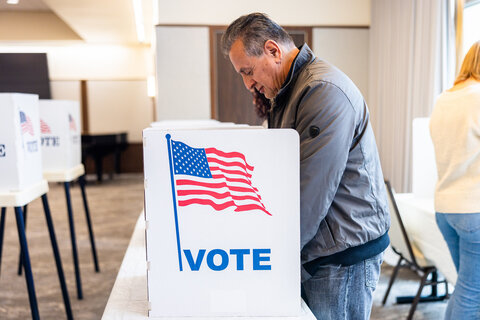The Department of State (DoS) recently proposed a regulation that would drastically shrink the au pair program by altering the way au pairs are compensated based on where they work in the United States and how many hours they work. These changes are unnecessary and would complicate a program that needs more, not less, regulation by raising wages, increasing reporting requirements, and multiplying paperwork.
Au pairs are foreign nationals who travel to the United States on a J–1 visa, live with an American host family for up to two years, and care for their children. Sponsoring agencies are the middlemen who help host families identify au pairs and run the regulatory gauntlet for everyone involved. Au pairs receive lodging, meals, and a wage their host families pay. The minimum wage for au pairs is the federal minimum wage minus 40 percent to compensate host families for lodging and meals. For au pairs, they must take classes paid for by the host families, engage in cultural activities, and be involved with the family by going on vacations and being part of the household.
The au pair program allows them to become acquainted with American life for up to two years. One of the justifications for the program is that au pairs will return to their home countries more aware of American values and culture, and American families are also supposed to benefit from the cultural exchange by learning about foreign customs. However, the main benefit for most host families is childcare.
In 2022, 21,449 au pairs on J‑1 visas entered the United States. Although au pairs can be in the program for up to two years, many only participate for one year before returning. The number of au pairs is between 2–4 percent of all childcare workers in the US, a small fraction. Au pairs are also heavily concentrated in households where both parents are skilled workers with high incomes. Furthermore, they are geographically concentrated in richer cities and suburbs in wealthy states. About a third of au pairs went to California, Washington DC, New York, and Illinois in 2022.
When the government proposes new regulations, they first post a Notice of Proposed Rule Making (NPRM). The regulation doesn’t just go into effect. The purpose of an NPRM is to solicit comments from the public or anybody else that identifies problems that would undermine the regulation’s intended effects, could have other unintended negative effects, or would violate the law and could be struck down by the courts. The last point is crucial to regulators. They must read the submitted comments and respond to the most substantive, sometimes even changing the regulation before it goes into effect. If they don’t, lawsuits will likely be filed and succeed.
I filed comments on the proposed au pair regulation that focuses on a particular inconsistency in the new au pair wage formula. Before reviewing my comments, it’s important to explain that they are not principled from a libertarian perspective. If regulators adopt my proposed changes, the final regulation would be more libertarian than that currently proposed. Still, the au pair program would be a far cry from the ideal free labor market I support.
I didn’t write a principled libertarian comment that called for ending the regulations that constrain the number of au pairs because regulators would have ignored it, as such a program would be contrary to current law. “I can’t change the law,” the regulators would think, “so why would I waste my time reading this?” I concentrated my regulatory comments on the changes that are consistent with current law and would reduce the harm of the regulation.
Au Pair Compensation
The current wage for au pairs is the federal minimum wage minus 40 percent, a deduction for the cost of lodging and meals. The DoS proposes replacing the current compensation formula with the maximum of the state, local, or federal minimum wage that is then adjusted according to a multitiered table whereby the maximum wage is paid.
The multitiered table ranges from a low of $8 an hour to $18, while minimum wages nationwide range from $7.25 on the federal level to $17.68 in Emeryville, California. Additionally, the State Department proposes mandating time‐and‐a‐half for hours worked above 40 per week.
The DoS justifies its proposed rule because “geographically‐specific variation in the costs of living” and the “federal minimum wage no longer provides sufficient compensation to au pairs placed in geographic areas in which growing number of states and localities have adopted state or local minimum wages that exceed the federal minimum wage.”
On the other side of the compensation formula is the 40 percent deduction mentioned, which is based on the current federal minimum wage multiplied by some arbitrary numbers to compensate host families for the cost of providing lodging and food. The DoS does not propose increasing the monetary cost of lodging and meals that host families can deduct from au pair compensation. In other words, the DoS proposes increasing the wages paid to au pairs but does not adjust the lodging and meals deduction formula to include those new higher minimum wages. Just as wages have risen to different extents in the geographic regions of the United States, so too has the cost of providing lodging and meals.
The DoS should also use the new minimum wages it proposes on the deduction side of the compensation formula. It makes little sense to increase the wage and then not use that increased wage on the deduction side. My comment goes into detail about different options for adjusting the deduction side of the formula.
Other Damaging Reforms to the Au Pair Program
Beyond the problems mentioned above, the DoS rule adds unnecessary complexity. Section 62.31(a) of the proposed rule creates a distinction between a part‐time au pair (24–31 hours of childcare per week) and a full‐time au pair (32–40 hours per week), which host families and au pairs would have to agree to in advance. However, the number of hours worked for calculating compensation would be maximum in each category (31 or 40 hours). This creates a perverse incentive for host families to require au pairs to work the maximum number of hours, whether they are full‐time or part‐time. But beyond that, why even create this arbitrary tier? Au pairs should be paid for the hours worked.
Section 62.31(l) of the proposed rule concerns rematch when a host family or au pair decides to terminate the relationship. Under the proposed rule, a rematch would require the sponsoring au pair agency to refund au pairs 25–75 percent of the fees they paid, if the sponsors cannot find a suitable rematch. This creates a bad financial incentive for sponsors to cover up or diminish problems with a particular au pair in favor of placing them with another family as soon as possible. Perversely, the au pairs who have completed 75 percent of their initial program or are on six‑, nine‑, or 12‐month extensions may not request a rematch. This is an attempt to reduce the financial liability of the sponsors created by Section 62.31(l), but it would incentivize au pairs to stay in bad host family situations. This is a perverse restriction on them.
Section 62.31(j) also requires that updated work schedules agreed to by au pairs and host families be updated in a legal contract overseen by the sponsors. This unnecessary regulatory burden increases the transaction costs and other costs for all parties.
The rule continues in like fashion, suffocating the au pair program under a pile of paperwork. The current au pair program is far from libertarian, but the proposed regulations would worsen it. The United States does not have a migrant domestic worker visa like Singapore, and there is little prospect that one could be enacted soon. Au pairs are too legally restricted, although they are paid above the minimum wage in most cases. They should be able to switch jobs easily and have more leeway for working in the United States, attending school, and fulfilling the other visa requirements. Similarly, American families face onerous reporting restrictions and wage regulations that raise the costs.
Suppose the point is to make the immigration system more beneficial for Americans. In that case, there is no benefit to undermining the au pair program and there is much to gain by deregulating or radically expanding it—to say nothing of creating a broader domestic workers visa. Americans are productive workers with high opportunity costs who spend too much time on household chores. If lower‐skilled migrants want to work for a wage higher than they could make in their home countries and if Americans want to hire them, both win.




